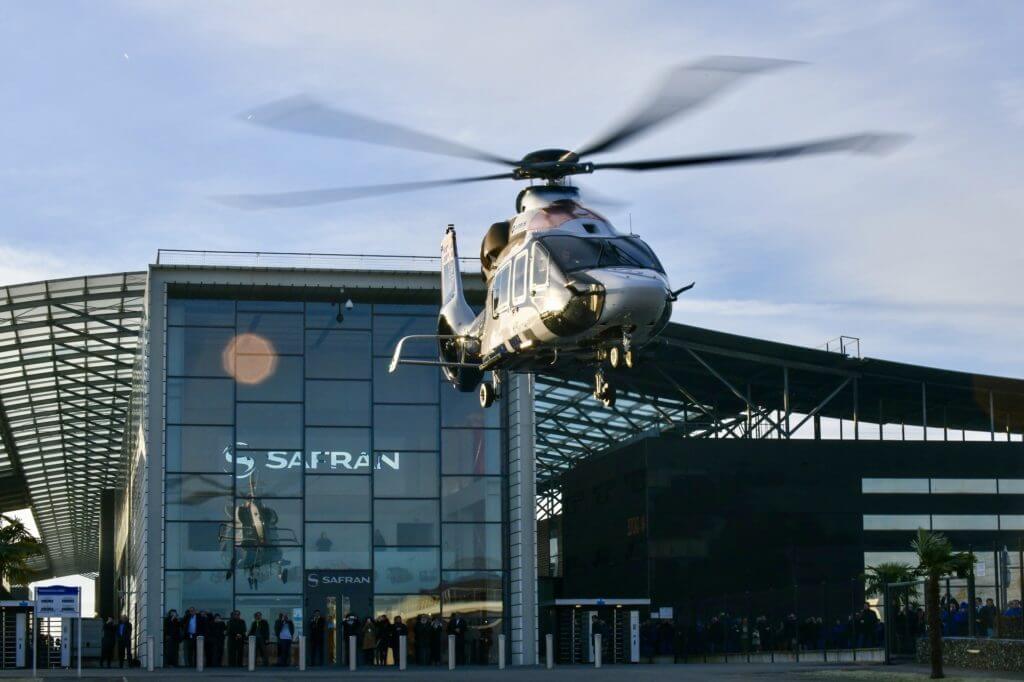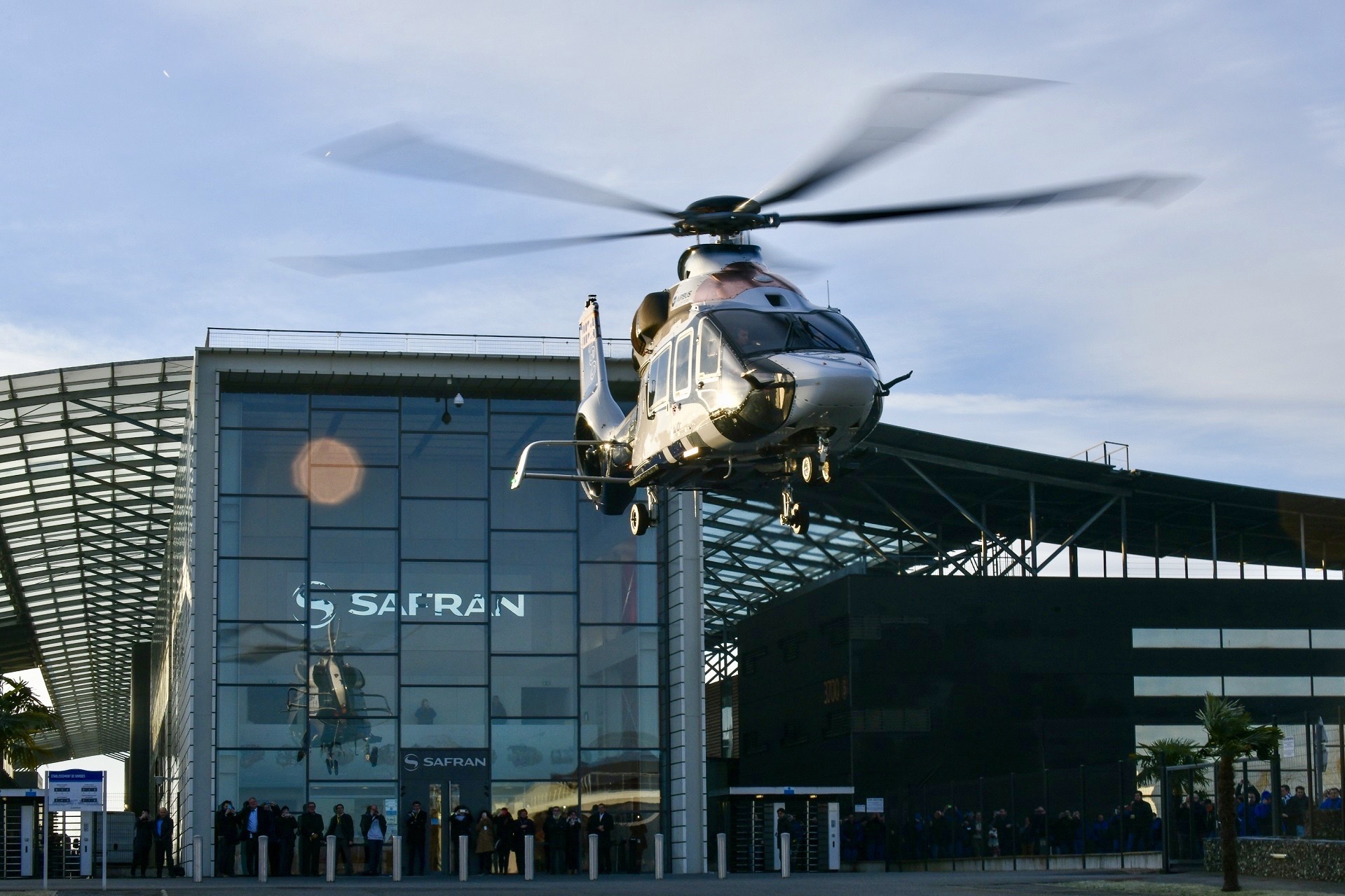Safran is planning on four engine certifications this year and is seeing recovery signs on the helicopter market.
The first nod in a series from the European Aviation Safety Agency (EASA) is expected in March, for the Ardiden 3C. The 1,800-shaft-horsepower-class turboshaft is also hoped to be certified by China’s CAAC, under the WZ16 designation, in September 2019. The Ardiden 3C powers the Avicopter AC352, the Chinese version of the jointly developed Airbus H175.

In April, the Arriel 2H is expected to be certified by the EASA. It powers the in-development Avicopter AC312E, a medium twin similar to the Airbus AS365 Dauphin. Both the AC352 and the AC312E are in flight tests.
The Aneto 1K and the Arrano 1A will conclude the year, as far as EASA certification work is concerned. So far, the 2,500-shaft-horsepower Aneto 1K has accumulated more than 450 test hours, including more than 70 in flight. It powers a beefed-up version of the Leonardo AW189 super-medium twin.
The 1,100 to 1,300 shaft-horsepower Arrano 1A can be found on the in-development Airbus H160 medium twin. “We have accumulated more than 5,000 test hours, including more than 1,000 in flight,” a spokesman said.
The global market for civil rotorcraft, which has been suffering from simultaneous downturns in several segments, is showing signs of recovery, according to Bruno Bellanger, Safran Helicopter Engines’ executive VP, programs. “The lowest point in offshore oil-and-gas is behind us,” he said. Flight hours are on an upward trend, including those of the Airbus H225. The type has been affected by a lack of confidence from operators after the 2016 accident. Lighter helicopters are recovering, too, which Safran sees via the increasing utilization of Arriel and Arrius engines.
Bellanger predicts the super-medium segment will grow in oil-and-gas, thanks to the current level of oil prices. But the offshore industry “has learned how to do without heavy helicopters,” putting a question mark on the future of civil heavies.
Geographically speaking, Safran maintains its forecast for emerging countries – India, China and Russia are expected to start growing fast from 2020. Brazil, however, still has to recover from a major economic crisis – “our crystal ball [on Brazil] is a bit smudgy,” Bellanger said. Western countries are described as “mature,” meaning their growth will be in the two- to three-percent range.
Last year, Safran produced 732 engines. This marked a minor rebound from 2016, after years of decline. Bellanger characterized his company as “resilient,” as its market share is estimated to have increased last year. He would give no figure for 2017, but the market share in 2016 was measured at 32 percent (comprising civil and military deliveries).
The Arrius family was a driver of the relative stability. Safran handed over 110 Arrius engines for the H135. The Bell 505 light single is contributing to Arrius sales, as 20 are in service and a three- to four-year ramp-up will lead to the manufacturing of 110 Arrius engines per year for Bell’s newest product.
Safran heavily relies on Airbus Helicopters as its main customer. Nevertheless, Bellanger asserted Airbus’s decision to terminate the H120 light single program and put studies for the heavy X6 on the backburner have virtually no influence on his company’s plans. The Arrius-powered H120 had long been a slow-seller. Moreover, “other Airbus light programs are doing well,” Bellanger said.
Meanwhile, the X6 was widely expected to be an application for a greater-power variant of the Aneto, in the 3,000 shaft-horsepower class. But the selection had not been announced and “we are carrying on with our Tech 3000 demonstrator [in the 3,000 shaft-horsepower class],” Bellanger said. And the selection of the Aneto on the AW189 is seen as having already validated Safran’s strategy in high-power engines.
In customer support, the company is making the most of newly available digital technologies. At Heli-Expo, Safran is launching Expert link, a new video assistance service. It allows the customer to connect with Safran Helicopter Engines experts through a live video feed. The goal is to facilitate technical diagnosis and guide them through a maintenance task.
“This is the first mobile application we launch for helicopter operators,” said Olivier Le Merrer, Safran Helicopter Engines EVP support and services. Expert link features a secure datalink and is compatible with most smartphones, tablets, borescopes and smart glasses.









